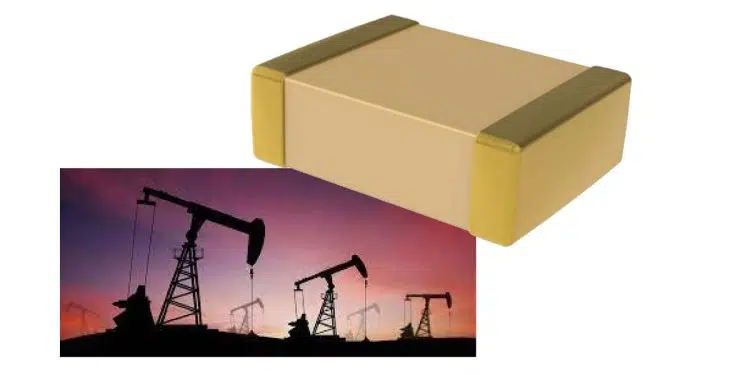KEMET, a YAGEO Group company, announced release of its CHT series of high temperature 260°C SMD Multilayer Ceramic Capacitors (MLCCs).
The KEMET’s C0G High Temperature 260°C SMD Multilayer Ceramic Capacitors (MLCCs) are constructed from a robust and proprietary C0G/NP0 base metal electrode (BME) dielectric system that offers industry-leading performance at extreme temperatures.
The CHT series high temperature C0G MLCC capacitors are specifically designed for applications in harsh environmental conditions such as downhole oil exploration, industrial high temperature electronics, geothermal, and aerospace which require capacitors that are robust and reliable at extreme temperatures such as 260°C.
KEMET’s C0G dielectric exhibits no change in capacitance with respect to time and voltage and boasts a negligible change in capacitance with reference to ambient temperature.
KEMET’s C0G High Temperature 260°C SMD also incorporates a gold (Au) termination finish providing a clean solderable surface that can withstand the most extreme environments. These devices are Lead (Pb)-Free, RoHS, and REACH compliant without the need for any exemptions.
Features
- -55°C to +260°C operating temperature range
- Lead (Pb)-Free, RoHS and REACH compliant
- EIA 0603, 0805, 1206, and 1210 case sizes
- DC voltage ratings of 10V, 16V, 25V, 50V, and 100V
- Capacitance offerings ranging from 0.5pF up to 15nF
- Gold (Au) termination finish
- Available capacitance tolerances of ±0.10pF, ±0.25pF, ±0.5pF, ±1%, ±2%, ±5%, ±10% or ±20%
- Extremely low ESR and ESL
- High thermal stability
- High ripple current capability
- No capacitance change with respect to applied rated DC voltage
- Negligible capacitance change with respect to temperature from -55°C to +260°C
- No capacitance decay with time
Applications
- Downhole oil exploration
- Industrial high temperature electronics/sensors
- Geothermal
- Aerospace
- Decoupling, bypass
- Filtering
- Transient voltage suppression































